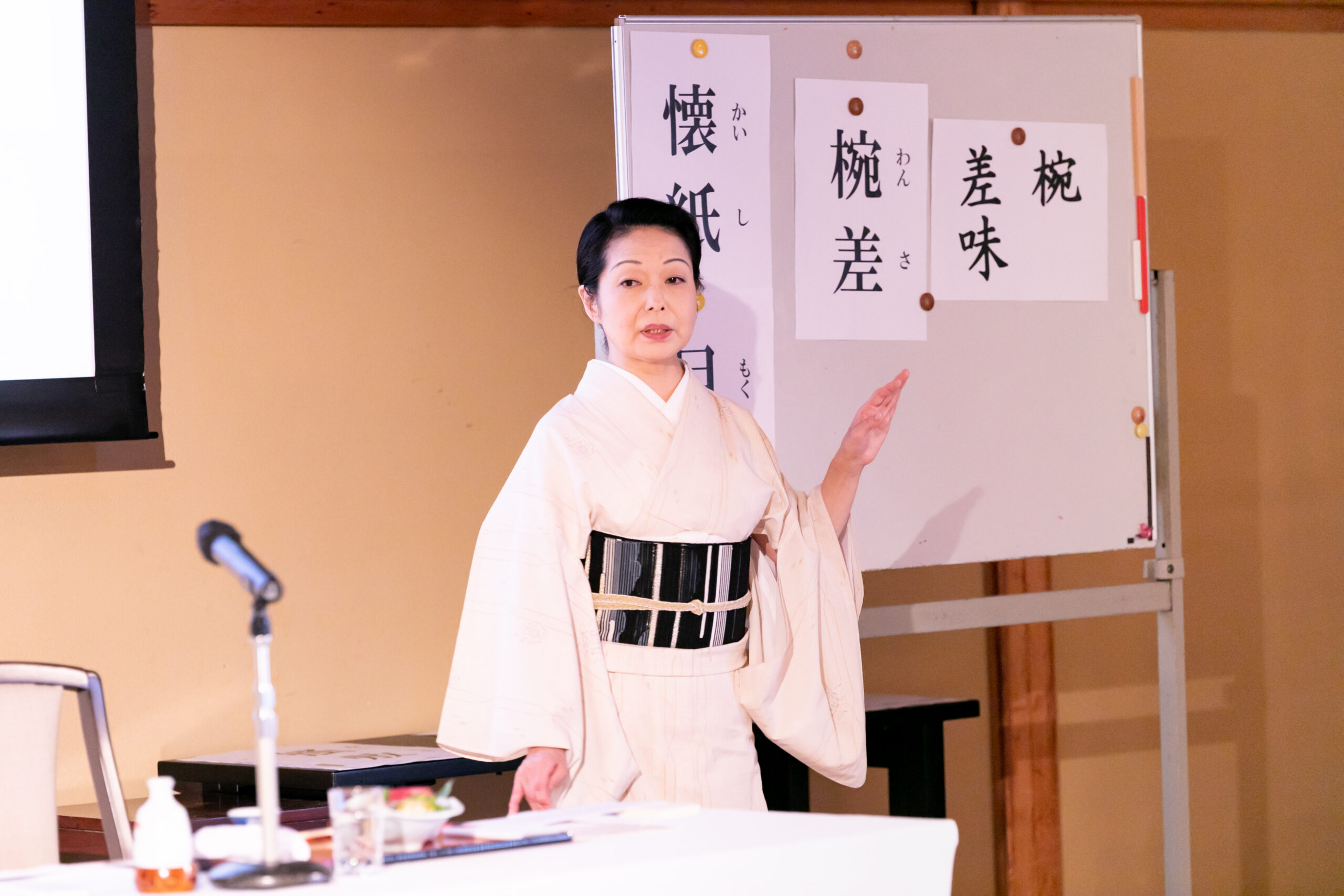This business plan is recommended for new employees, managers, and sales training.
Dining Plan
From 15 persons 22,000 yen
Plan to learn Japanese food manners while eating
This is a training plan unique to ryotei restaurants where participants learn basic Japanese food manners, such as how to hold chopsticks and handle utensils, while eating an authentic kaiseki course. A certified instructor of Japanese dining etiquette lectures on proper etiquette. The instructor takes pictures of the participants' hands and relays them to a large screen for easy understanding. How about learning proper Japanese food manners for in-house sales staff training, training for new recruits, or for important business meetings and dinners?



[Includes.
Kaiseki course, toast drink, room charge, lecturer, dining etiquette book, service charge and consumption tax
This plan is applicable only for lunch time (11:00-15:00).
Beverages are calculated by actual number, please consult us for free drinks.
*Only for parties of 15 or more.
Menu Image
Chopstick service | Appetizer | Soup | Zori | Simmered dish | Grilled dish | Side dish | Meal | Appetizer | Water sweets


In the authentic tatami room seating style of honzen, you can learn practical handling of the zabuton (Japanese cushion). However, since many people are not used to sitting on the tatami mats and often have difficulty concentrating, we have recently been increasing the use of table seating style. Please consult with us in advance.
One instructional book per person will be provided. You can use it to review and reflect on the details, etc.
[Details of manner].
The way to enter a store without shoes, the way to handle shoes, the way to walk on tatami mats, the way to enter a room, the way to sit down, and so on.
How to handle the cushions, how to greet guests, and how to enjoy the room.
The handling of the napkins and toasts before the meal begins.
Chopstick handling, splitting and bag disposal
The course includes how to enjoy the dishes, how to handle bowls and soups, how to use soy sauce, how to use sashi-inokuchi (soy sauce cup) and other decorative items, how to use kaishi paper, seasonal ingredients and decorative slices, how to eat hard foods, and how to handle fish bones, etc.



Appetizers you don't know where to start, do you hold the bowl? How do you eat what's inside? Is it OK to leave uneaten food? There are many things about Japanese food etiquette that you may not know. Once you learn them, you will be able to enjoy your meals with peace of mind, even at dinners with guests or at important dinner parties.
![Tsukiji Jisaku [Official] Ryotei Famous Mizutaki -Official direct reservation special offer-.](https://jisaku.co.jp/wp-content/uploads/2025/01/header-logo.png)
